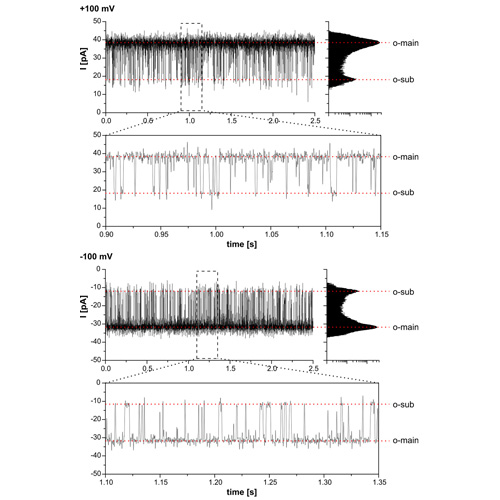Oep23 forms an ion channel in the chloroplast outer envelope
12-Feb-2015
BMC Plant Biology, 2015, doi:10.1186/s12870-015-0445-1, 15:47 published on 12.02.2015
BMC Plant Biology, online article
BMC Plant Biology, online article
Background: Metabolite, ion and protein translocation into chloroplasts occurs across two membranes, the inner and the outer envelope. Solute and metabolite channels fulfill very important functions in integrating the organelles into the metabolic network of the cell. However so far only a few have been identified. Here we describe the identification and the characterization of the outer envelope protein of 23 kDa, Oep23 from garden pea. Results: Oep23 is found in the entire plant lineage from green algae to flowering plants. It is expressed in all organs and developmental states tested so far. The reconstituted recombinant protein Oep23 from pea forms a high conductance ion channel with a maximal conductance in the fully open state of 466 ± 14pS at a holding potential of +100 mV (in 250 mM KCl). The Oep23 channel is cation selective (PK+ : PCl- = 15 : 1) with a voltage dependent open probability of maximal Vmem = 0 mV. Conclusion: The data indicate that the Oep23 activity represents a single channel unit and does not assemble into a multiple pore complex like bacterial type porins or mitochondrial voltage dependent anion channel. Thus, Oep23 represents a new member of ion channels in the outer envelope of chloroplasts involved in solute exchange.











